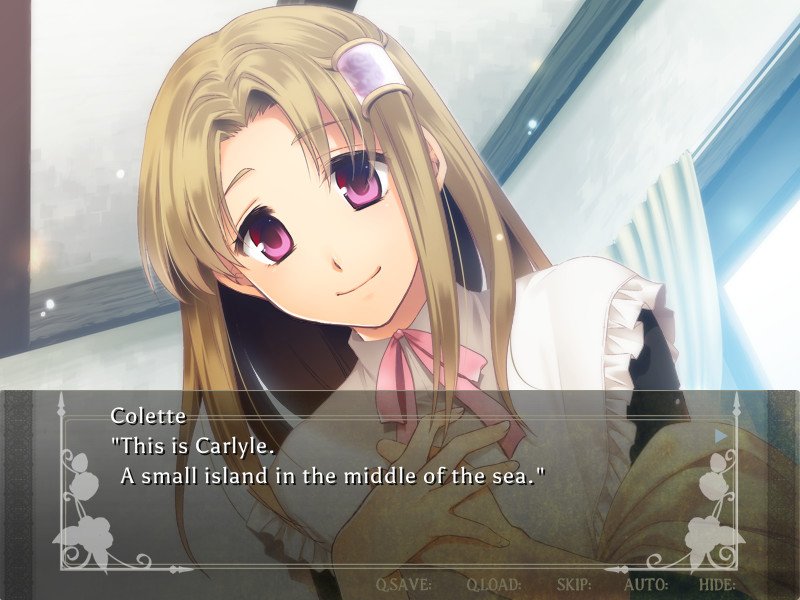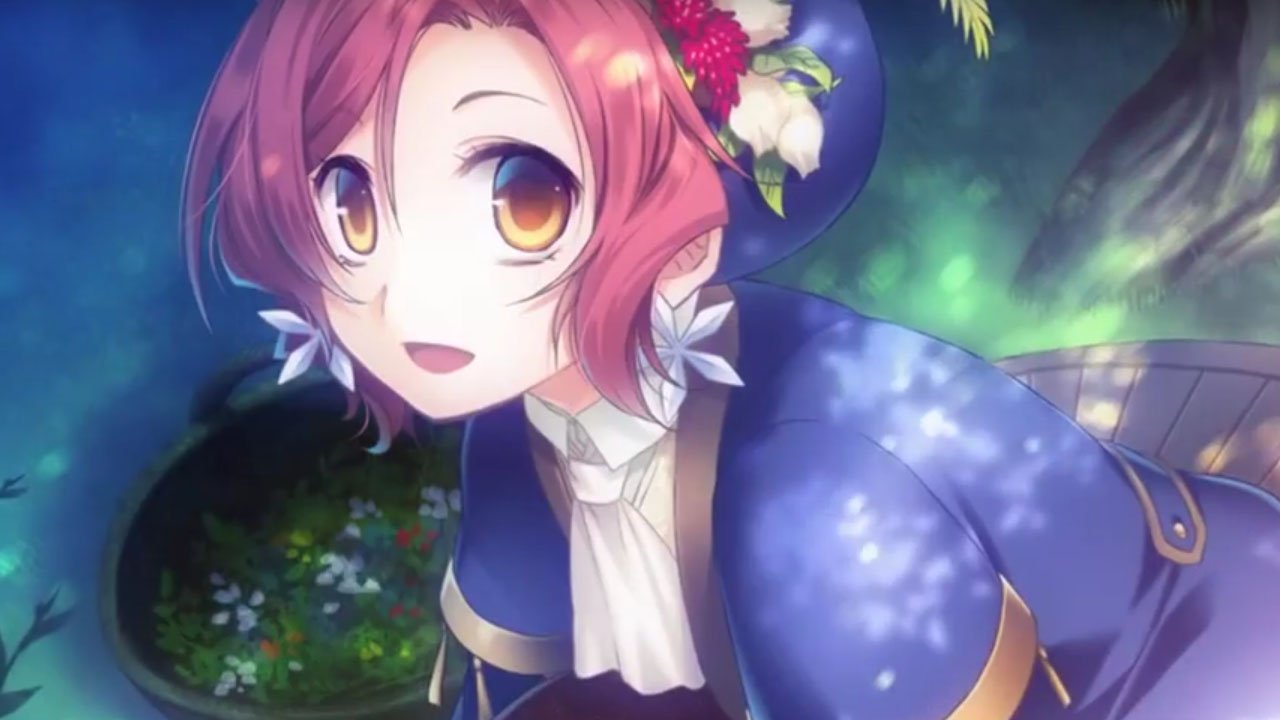Visual novels are different from most games. Unlike first-person shooters or strategy titles, VNs pride themselves on the stories behind their worlds. Good writing is fundamental to every visual novel, and glancing through the most highly rated VNs will explain why. Games like Snatcher and VA-11 Hall-A introduce memorable characters in living worlds, taking the player through a complicated story with drama, tension, and friction between people living their everyday lives. Visual novels are designed to be immersive, and a good visual novel suspends disbelief in that regard.

Developed by Uzumeya and published by Fruitbat Factory, ENIGMA: tells the story of Chester, a soldier with a terminal illness named “Enigma.” While out at sea, Chester experiences a shipwreck and drifts ashore onto the hidden island of Carlyle. Chester proceeds to learn more about the island, building close friendships with its inhabitants, and learns of a mysterious forest that supposedly eats people. Its name is also “Enigma.” As Chester grows closer to his new neighbors amidst his coming death, he sets out to discover more about Carlyle’s secrets.
ENIGMA:’s developer, Uzumeya, has been traditionally billed as a female-oriented visual novel group. But that’s a bit of a misnomer: ENIGMA: isn’t exactly an otome game, even though it does share some tropes from the female romance genre. Instead, it’s more of a mixture between mystery and romance, veering towards women players but open to practically any VN fan interested in a touch of mystery.
But ENIGMA:’s writing is exactly where the game falters.
Uzumeya’s premise gives the game an interesting starting point for a mystery story. Throw a man on an uncharted island, give him just a couple days to live and make him figure out the untold secrets behind where he lands. But the game gets a slow start, and even amidst the action scenes that pepper the middle of the story, ENIGMA: never quite draws the player in.
There are two reasons for this failure. For one, ENIGMA:’s pacing is lopsided. Serious moments will quickly turn into jokes, and character development scenes tend to veer away from developing anyone’s personality beyond their surface values. At best, the game ushers the player away from rich storytelling moments in order to advance the plot. At worst, ENIGMA: shatters the player’s suspension of disbelief by applying a deus ex machina just to salvage its own writing.

Which leads to ENIGMA:’s second major problem: The game’s characters just aren’t interesting. Sure, the game’s island inhabitants live quite differently from the main character on their little island, but there isn’t anything unique, exciting, or engaging about ENIGMA:’s character design from a VN perspective. You have the tsundere feminine boy, the doting housekeeping sister, the female healer, the mysterious and stoic magic girl, and so on and so forth. While the writing itself behind these characters isn’t bad, and the action scene illustrations are quite well done, ENIGMA: doesn’t introduce any characters that stand out on the screen. Everyone feels like a trope, not a character. ENIGMA: is just too bland.
Which is a shame, because ENIGMA:’s production value is quite strong for a doujinshi game. For one, there’s a wide range of available expressions for each character. When Chester speaks to Colette, for example, Colette responds with a variety of eye, mouth, and lip changes. Characters also turn their heads to and away from each other in dialogue, which isn’t always the case with smaller visual novels that have a limited art budget. Actions aren’t recycled all that often in ENIGMA:, and transitions from one expression to the next are extremely fluid between lines. This makes the game’s characters feel lively during dialogue, as if the world is in constant motion. Not to mention, the art behind each character is quite strong.

Even looking past the writing, there are some awkward quirks at play with how ENIGMA:’s user interface is laid out. Chester is incredibly large compared to the game’s female characters, which looks off-putting on the screen. For that matter, most women feel a bit too small compared to their male counterparts; An increase in size for the game’s ladies would make conversations appear a bit more natural. There’s also ENIGMA’s default resolution. The game runs at 800×600, which is the only offered output. While a 4:3 ratio isn’t the worst experience for a visual novel, it definitely feels outdated: most VNs clock in around 1280×720, if not higher. And while the game scales decently enough in fullscreen mode, it just doesn’t look as crisp as it would for a widescreen monitor. Which, again, makes the game feel a little dated in comparison to visual novels like Long Live the Queen and VA-11 Hall-A, which were developed with widescreen monitors in mind.

These might feel like small grievances, but visual novels aren’t just literary experiences. They’re also about the feel and design behind the game’s artwork and interface. Because ENIGMA: has such weird UI issues, it’s easy to break immersion while playing. In other words, when these small problems come together, they leave the player with a game that has some serious presentation issues that make for an unpleasant experience.
Which is a shame, because ENIGMA: isn’t a bad visual novel. It looks nice enough, it plays well enough, it has an interesting idea behind it, and its characters are plausible. The problem isn’t that the game is poor; ENIGMA: sets out to do everything it wants to, and it succeeds for the most part. The problem is that it simply isn’t memorable. It’s not enough for a VN to look nice; it has to suck the player into its world, too. Some players might be willing to put down their money on ENIGMA: right from the start, but it’s hard to recommend the visual novel. At least, not until the game goes on sale.




